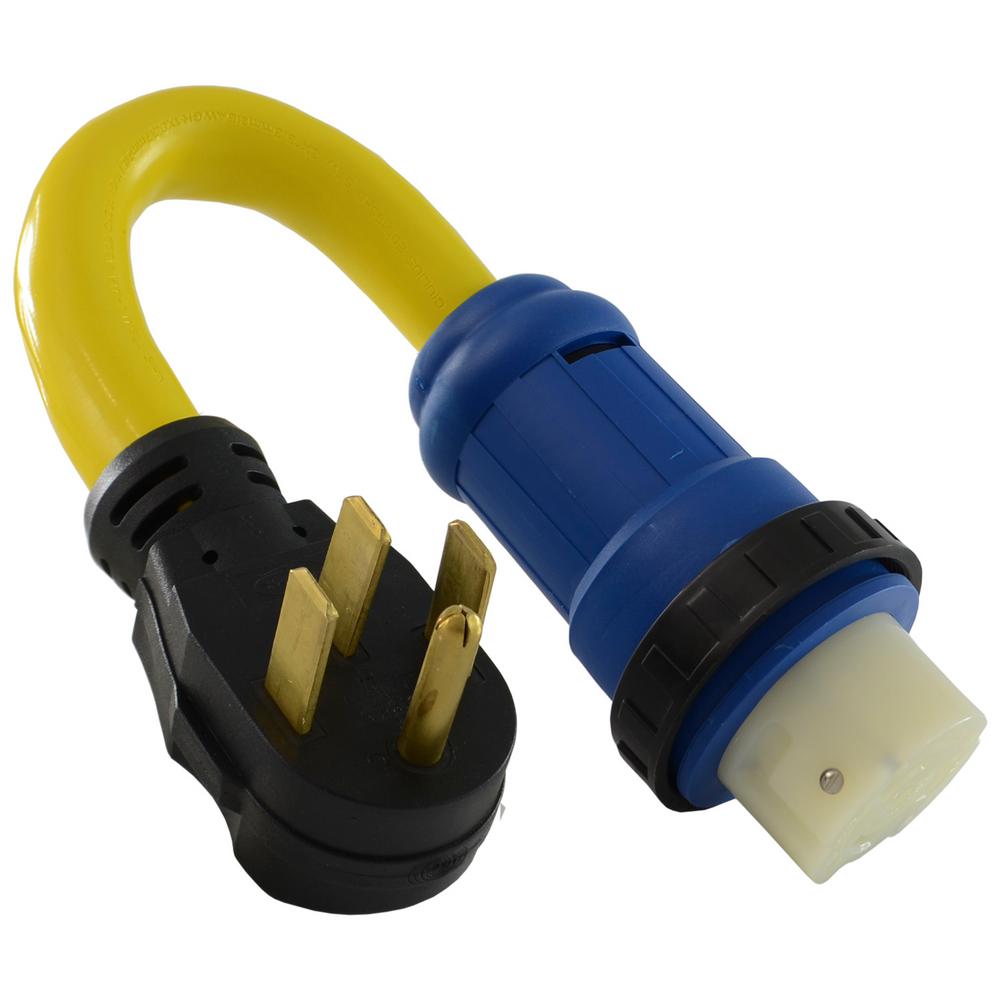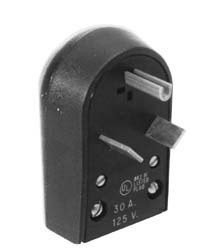
#50 amp rv plug how to
Just bear in mind that you should always hire the help of a licensed electrician to assist you if you are not 100% certain of how to complete this task.īefore you start, you will need a breaker. Two of these should be 120-volt hot wires while one should be neutral and the other grounded.Įach one of these hot wires will supply you with 50 amps 120 volts (120 volts x 50 amps = 6,000 watts).īecause of the two hot wires that each give out 6000 watts, the total watts of power will equate to 12,000 watts (6000 watts + 6000 Watts = 12,000 watts). 50 Amp OutletsĪ 50 amp receptacle should be connected to 4 wires altogether. Read on to find out how to wire a 50 amp RV outlet so your RV’s batteries and power supplies are ready to go for your next big road trip. If you’re on the road pretty often, you will want to recharge the power systems in your RV as easily and quickly as possible. Of course, this depends on where you park your RV most regularly.
#50 amp rv plug install
Or, you can install one on the side of your garage or home. It’s possible to set up a 50 amp outlet on a pedestal such as in a campsite. Therefore, it can access a potential 12,000 watts of power. This is to draw just 120 volts to two different 120-volt circuits at the same time. Even when you wire a 50 amp outlet to a large RV, a double-hot-pole or a double-bus installation is almost always used.
#50 amp rv plug generator
Alternatively, you can use solar panels and batteries when camping off-grid or a generator to supply power while staying at a campground without power.This is not the case. Using shore power is the easiest way to get electricity to the RV. You should travel with a gearbox containing a variety of accessories so you’re never caught off-guard. Having the proper power cords and adapters is essential to a smooth road trip.

Corrosion increases resistance and the extra heat can lead to damage. Keep the prongs of your power cords and other accessories clean using a wire brush. Connect the RV Power cord to the surge protector.Plugin the surge protector or voltage protector.If you have a voltmeter, check the power pedestal voltage.

Always start with the breaker switch on the power pedestal off.RV surge protectors won’t tell you voltage, but they will prevent most electrical problems. These are especially useful when protecting against improperly wired outlets or lightning strikes. It won’t be a continuous reading like the other devices, but it can let you know if it’s initially safe to plugin. In this case, if you don’t have the means to buy purpose-built electrical adapters, you can use your multimeter to quickly check the campground’s box for proper voltage. Low voltage can overheat your wires and damage your electrical devices.Ī multimeter is a general electrical tool that everyone should have in their RV because they are key to diagnosing many electrical issues. Many come with surge protection as well, which protects your RVs electronics from voltage spikes.Ī voltage protector has all of the features of a circuit analyzer but also includes a voltage disconnect if the voltage drops too low. Low voltage can damage wiring and start fires, and grid surges can wreak havoc on your appliances.īefore plugging in, you’ll want to check the power pedestal voltage.Ī circuit analyzer connects directly to a campground socket and lets you know if it is safe to plug your RV in. Additionally, when a lot of RVs are pulling power from the same pedestal you can end up with a ground-out. But they are smaller, making them easier to store and less expensive.Įvery once in awhile campground wiring isn’t up to snuff, which can lead to power surges and cause damage to your camper. Puck adapters are a little more finicky- they can heat up due to their size and connections aren’t always as secure. Adapters only change the physical shape of the campsite plug to fit your RV. The two main types of RV adapters are dog-bone adapters and puck adapters.

That means to plug into a power pedestal you’ll need the correct adapters. Unfortunately, not all campgrounds come furnished with both 30A and 50A hookups. Most of the time this will be plenty to reach your RV campsite from the power pedestal. We recommend traveling with about 20-30ft of cable. Note that a 50A cord costs significantly more simply because it’s using heavier wiring. Many RV power cords also come with lock rings that provide additional security in the connection. They can heat up to the point of starting a fire if you try to use them! The orange cord that you buy at a hardware store might fit the plugs with an adapter, but they’re not designed to carry the 30-50A that is needed for most RVs. 25ft 30A RV Power Cord RV Power Cords and Extension CordsĪn RV Power Cord is a heavy-duty extension cord (often called an RV extension cord).


 0 kommentar(er)
0 kommentar(er)
